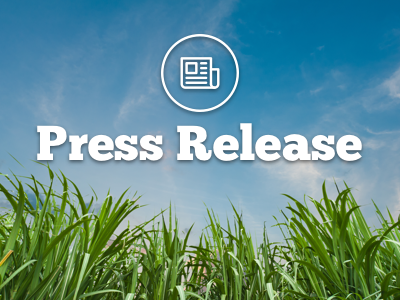Clewiston, FL – After experiencing a delay to the start of harvest due to extremely wet field conditions, U.S. Sugar has begun the 2023-2024 harvesting season, while also releasing the latest monitoring data measured by the Florida Department of Environmental Protection. The data once again shows the Everglades Agricultural Area and surrounding farming communities have excellent air quality, even better than on the coast.
The data, taken over a 335-day period from October 2022 to August of 2023 show Glades air is in the best of six categories listed by the U.S. Environmental Protection Agency for 311 days – 93 percent of the time – and in the next-best the other 24 days. Additionally, a Princeton University-based study shows sugarcane crops contribute to cleaning carbon dioxide from the air.
“The Glades farming communities have excellent air quality throughout the year, whether measured during the harvest season, pre-harvest or post-harvest,” said Judy Sanchez, Senior Director of Corporate Communications at U.S. Sugar. “This has been true year after year, and it once again proves that anti-farming critics are simply wrong about the air in the Glades. “Professional-grade air quality monitors in every location also show that good, safe air quality is very consistent throughout the entire region, never falling anywhere near ‘unhealthy’ categories.”
Glades air quality meets all state and federal Clean Air Act standards for PM2.5, the amount of “fine particulates.” “Good” air has less than 12 particles per cubic meter. The average for the Glades over the October—August time period covered in this update was 7.36 particles. By comparison, Royal Palm Beach came in at 7.52 and Delray at 7.62.
Fine particulates in rural areas can come from car and truck exhaust, dust from dirt roads and asphalt dust, sand particles blown in from the Sahara Desert, smoke from all types of fires, fireworks, BBQs, emissions from lawn mowers and leaf blowers, soot, ash, mineral dust, pollen, mold spores, rubber tire dust, emissions from fume hoods and smokestacks, and construction dust, among others.
Excellent air quality is generally consistent throughout the region all year-round, but that was disrupted on October 3, when smoke from Canadian wildfires reached Central and South Florida. As a result, our local ”good” and safe air quality in the region moved into the “unhealthy” range. At 10:00 am in Belle Glade, the public air quality monitor showed an AQI reading of 161. “The air pollution readings in the Glades increased alarmingly as smoke from Canadian wildfires settled over our area,” Sanchez said. “Air quality readings never came close to the ‘unhealthy’ range over the past year covered in this report before, during or after the Glades harvest season.”
On the battle against rising levels of carbon dioxide (CO2), the Carbon Mitigation Initiative at the High Meadows Environmental Institute at Princeton University reports that sugarcane has “turbocharged” efficiency to remove carbon dioxide from the air, calling sugarcane and corn “super-efficient workhorse crops.” Sugarcane and sweet corn are two of the major crops grown in the Glades farming region.
As we all live, work and raise our families together in these Glades farming communities, these numbers once again confirm what we see every day, that the air out here is “good, safe, and clean,” Sanchez said.
# # #
Oct-2023-Air-Quality-Report


